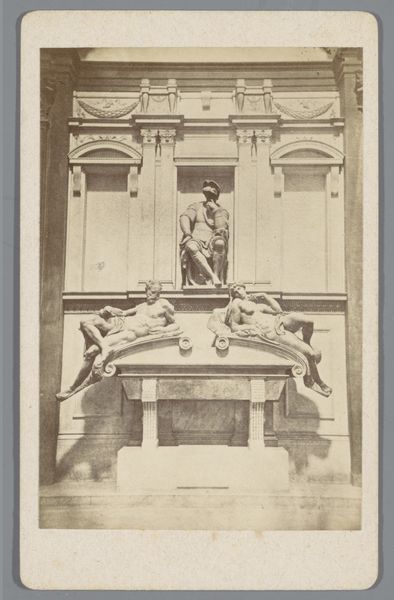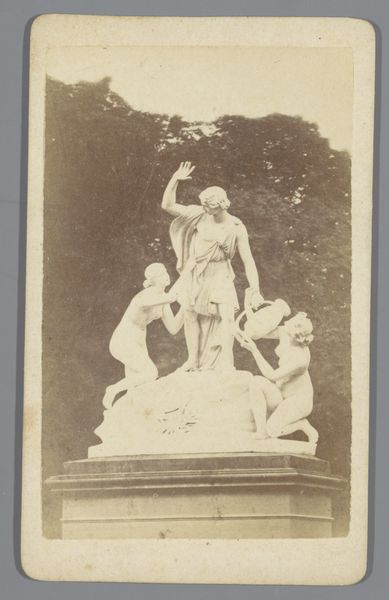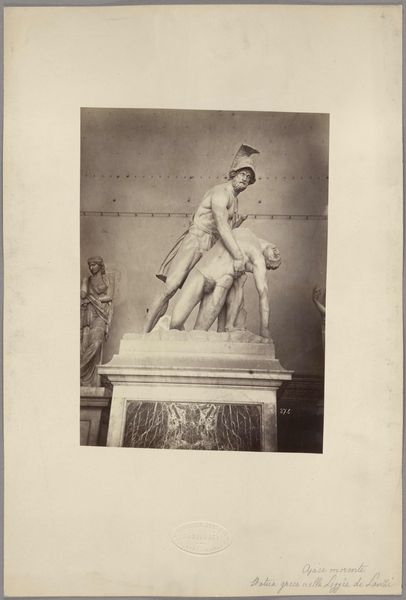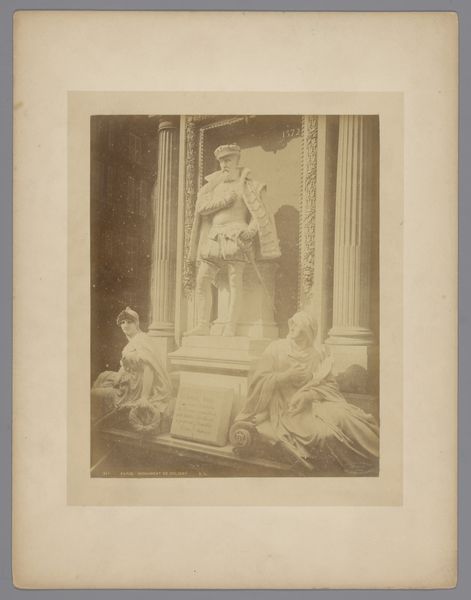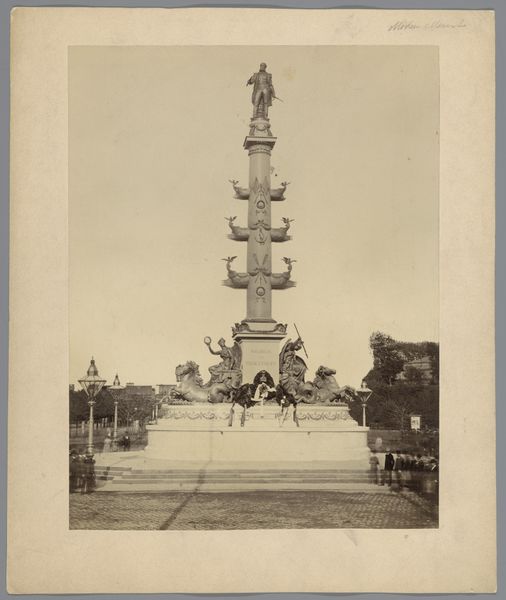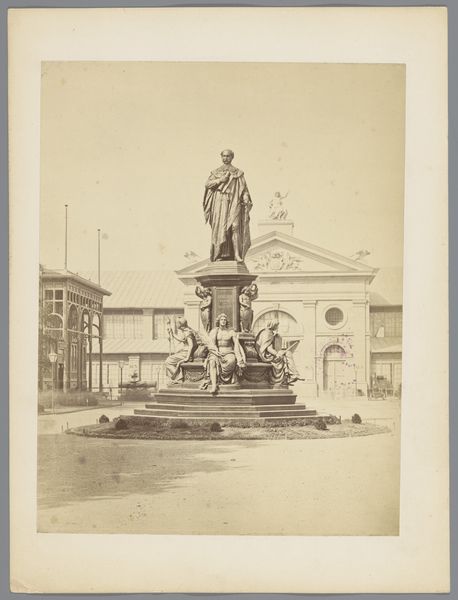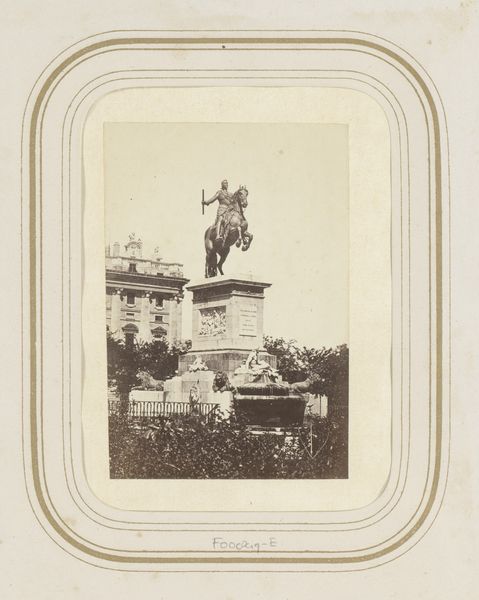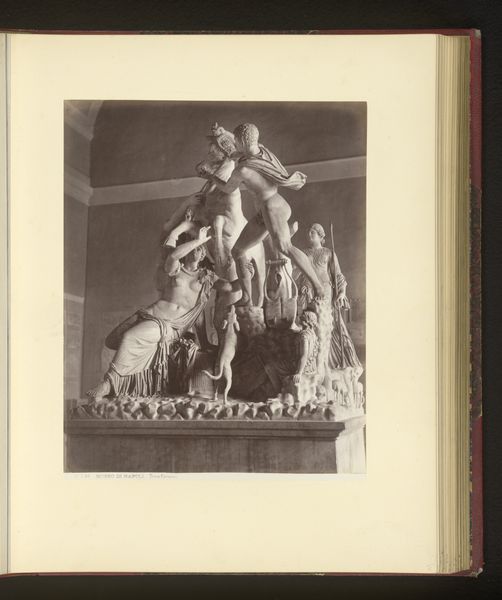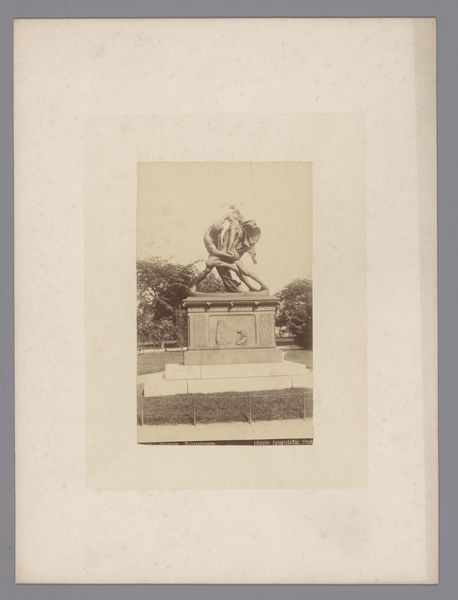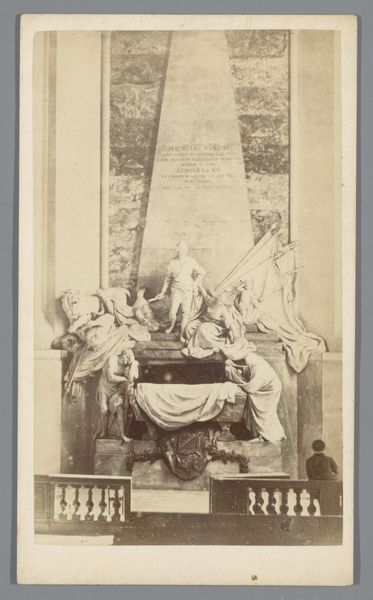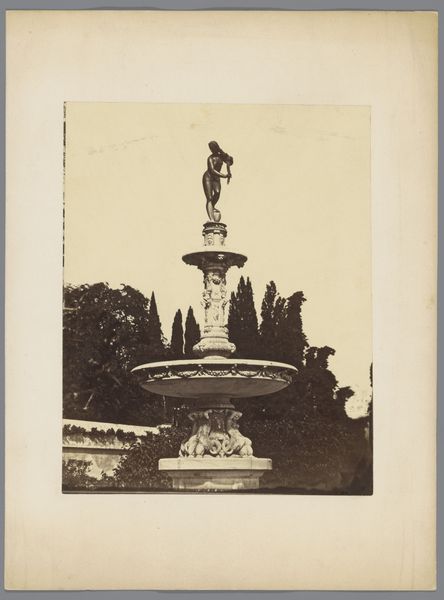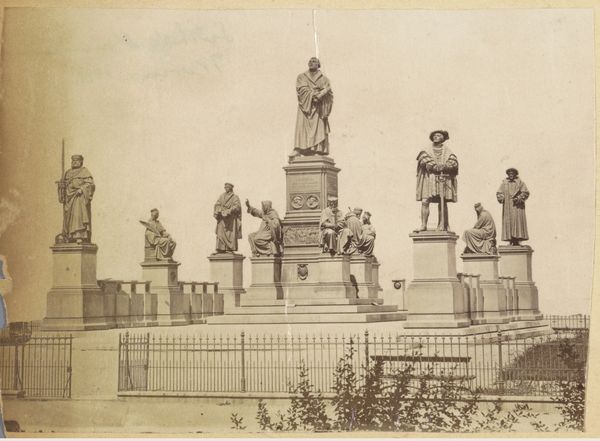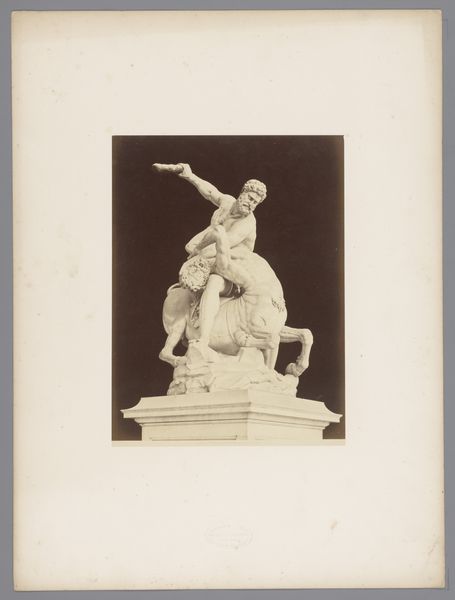
albumen-print, paper, photography, sculpture, albumen-print, architecture
#
albumen-print
#
portrait
#
16_19th-century
#
animal
#
neoclassicism
#
landscape
#
figuration
#
paper
#
photography
#
ancient-mediterranean
#
sculpture
#
cityscape
#
albumen-print
#
architecture
#
realism
Copyright: Public Domain
Editor: This is Robert Macpherson's "Rome, The Fountain of the Dioscuri on Quirinal Hill," an albumen print from around 1860. I’m struck by how this photograph, showing classical sculptures, becomes itself a historical artifact. It feels like it captures not just a place, but a particular moment in how Rome presented itself. What's your take on its historical context? Curator: You've touched on a crucial point. Macpherson was working in a Rome undergoing significant transformation. Think about the Papal States then, on the cusp of becoming part of a unified Italy. Photography like this served not just as documentation, but as a way of cataloging, and in some ways, solidifying a particular vision of Rome. How do you see the composition playing into this? Editor: The way the monument dominates the frame makes me think about power and authority. It's presented very formally, almost as if staged to impress the viewer. Is that something you see too? Curator: Absolutely. This wasn't just a neutral act of recording. The very act of choosing this viewpoint, framing it this way, reinforces the monument's grandeur, embedding it within a narrative of Roman authority. The monumentality also emphasizes the Church’s presence. Consider the role of photography in shaping public perceptions of Rome at this pivotal point. Editor: So, the photograph isn't just showing us the monument; it's participating in the politics of its image? Curator: Precisely! It's a form of cultural production deeply entwined with the political and social currents of the time. Macpherson's work becomes a document that reveals how Rome was being actively constructed and presented to the world. Editor: I hadn't considered photography as being such an active agent in shaping historical narratives. That really changes how I view it. Curator: Indeed, revisiting historical assumptions behind image making invites further inquiries in our engagement with the artwork.
Comments
No comments
Be the first to comment and join the conversation on the ultimate creative platform.
